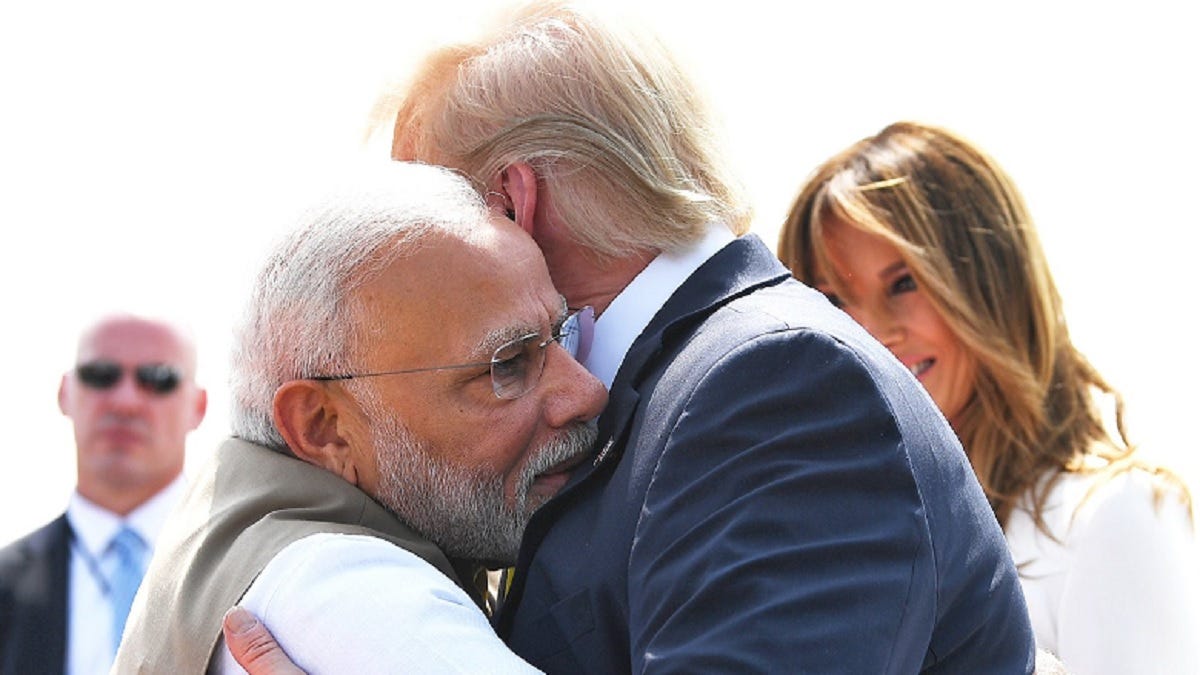
Urban Indians, i.e. Please Like Us (PLUs), are only now realising how inadequate health facilities are in our great cities, as the nameless and the faceless reel out chilling stories of how difficult it has been to just find a hospital bed.
On Sunday evening, a 48-year-old woman died in Meerut after being sent away by 9 hospitals in Delhi, Noida and Ghaziabad.
On Sunday morning, a Delhi man, who was turned away by 5 hospitals in Delhi, took a train to Bhopal where he died.
On Monday, a well-known newscaster was booked in Chennai merely for alerting citizens about the shortage of beds.
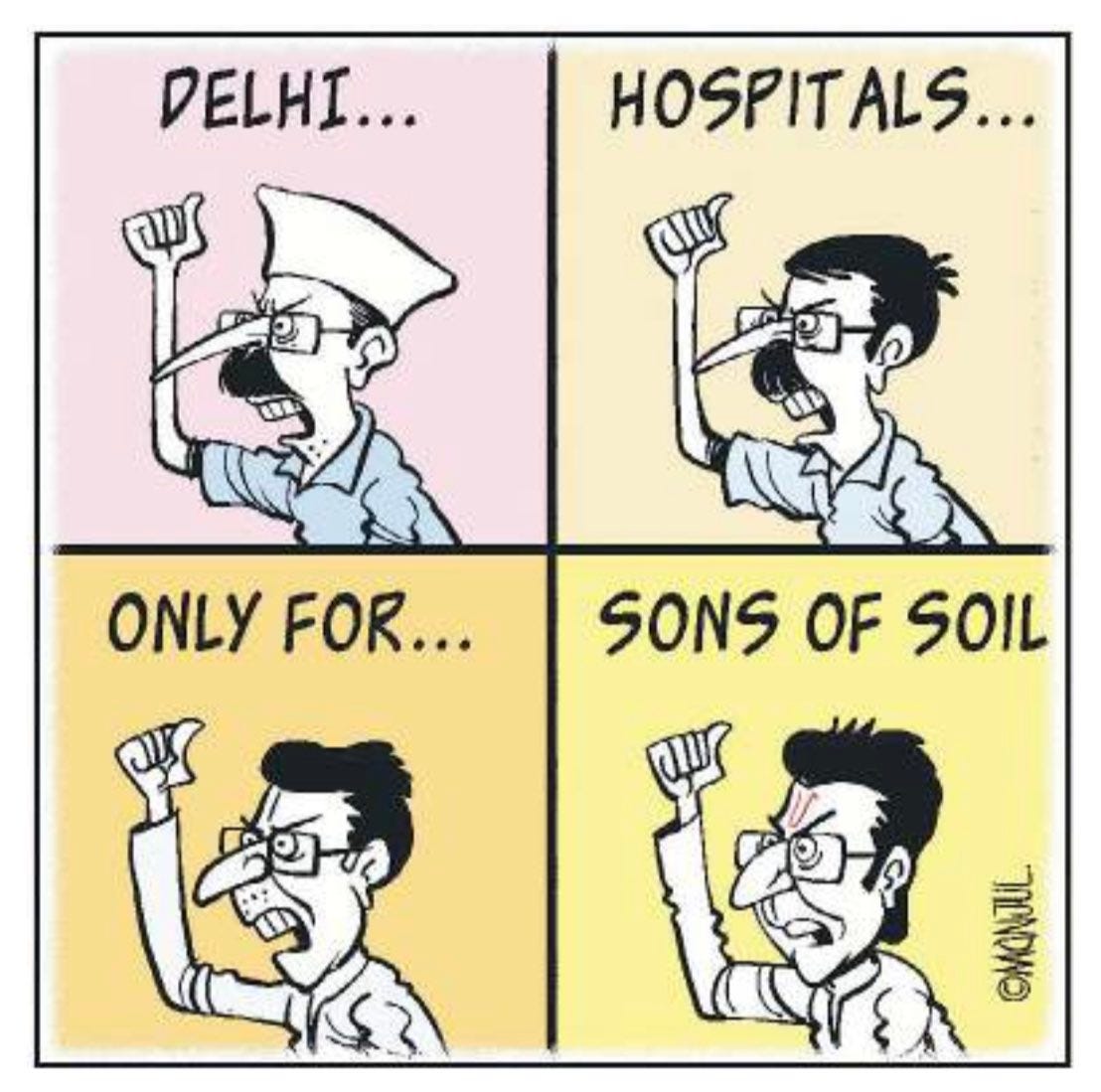
Tughalaqbad chief minister Arvind Kejriwal’s quixotic decision to allow only Delhi-ites to be admitted in the capital’s hospitals underlined the pitiable condition.
After all, just four months ago, the Aam Aadmi Party (AAP) had won the Delhi elections on the so-called “development” agenda, gloating over the massive improvement in “health infrastructure” in its first term.
If it is so bad in the capital of a nation that aspires to be a $5 trillion economy by 2022, what must the situation be in smaller cities and towns and villages?
And, who are the beneficiaries of 30 years of “health reforms”: corporates or citizens?
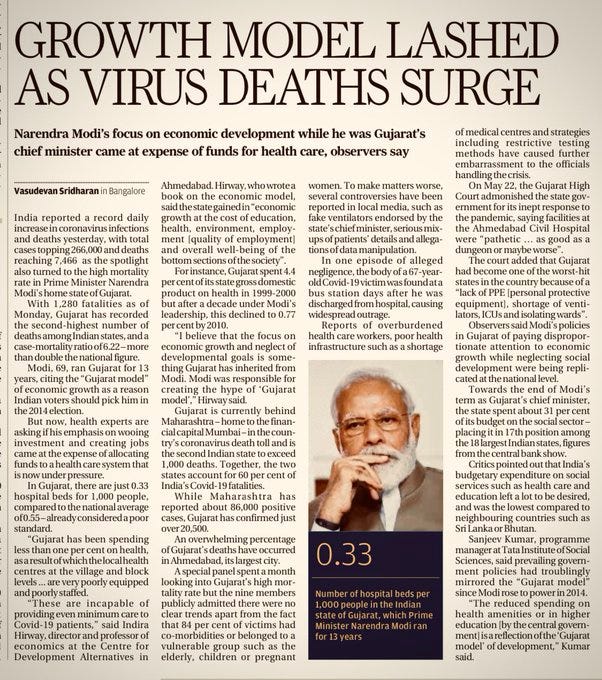
Those who have followed the continuing disinterest of the “State” in public health since 1991, like the journalist P. Sainath, say expenditure on health is the second biggest killer (after farm debt) in the countryside.
The #GujaratModel was projected as the answer.
But a report (above) in the Hong-Kong based South China Morning Post yesterday reveals the dismal COVID situation in Gujarat: the second-highest number of deaths in the country (1,347); and a case-to-mortality ratio that is double the national average (6.22).
But what the SCMP report by Vasudevan Sridharan reveals is that the #GujaratModel Indians voted for in 2014 is actually worse than the problem they thought it would solve.
Gujarat has just 0.33 hospital beds for 1,000 people compared to the national average of 0.55, which is already considered a poor standard.
Gujarat spends less than one per cent of the state GDP on health, just 0.77 per cent, which is down from 4.4% from around the time Modi took over as CM.
Gujarat spends less than a one-third of its budget on the social sector, placing it 17th among the 18 big states.
In other words, if this is what 13 years of Narendra Modi’s chief ministership could achieve, what did you expect across the country as the pandemic danced around?
The headline for the SCMP report (a paper owned by Jack Ma’s Alibaba Group) says it all: “Could Narendra Modi’s ‘Gujarat Model’ be to blame for the state’s high coronavirus toll?”
“Gujarat has been spending less than one per cent on health, as a result of which the capacity of local health centres at the village and block levels/small towns/Mohalla clinics are very poorly equipped and poorly staffed. These are incapable of providing even minimum care to Covid-19 patients,” said Indira Hirway, director and professor of economics at the Centre for Development Alternatives in Ahmedabad.
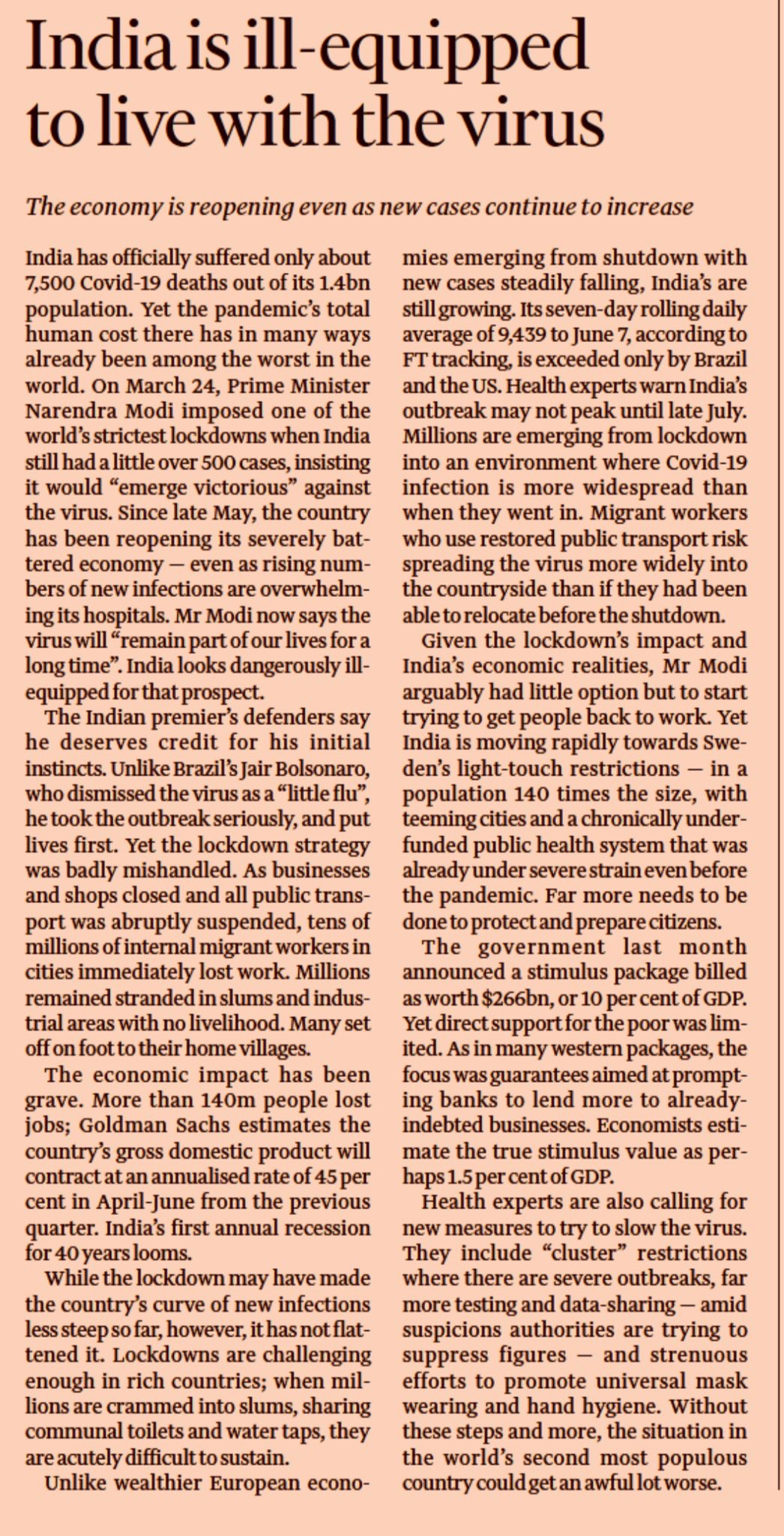
Little wonder that the current refrain is that “we must learn to live with the virus”. But the weighty Financial Times, London, says in an editorial (above) yesterday that India is ill-equipped to do even that, i.e. live with the virus.
The situation, the paper concludes, “could get an awful lot worse”.
Although it took 33 days for Narendra Modi to react to India’s first COVID case, the FT editorial notes he took the outbreak seriously unlike his ideological fellow-travellers, Jair Bolsonaro in Brazil and Donald Trump, who said it was a “little flu”.
In a J-POD podcast in April, Chidanand Rajghatta, The Times of India correspondent in Washington DC, recalled writing about the virus when it was in the margins of the media and our consciousness.
“On January 28, I wrote an op-ed Apocalypse Chow. It was about eating habits in China, it referred to the wet markets and the creepy crawlies they eat. I mentioned the Coronavirus and also the Chinese penchant for edgy genetic research.
“As someone remarked, you have to be “batshit crazy” to think you can consume unnatural foods and not expect it have some effect.”
“On February 24-25 when Donald Trump was in India, I wrote an op-ed, and the opening line was why are they hugging in the time of Coronavirus. By then the buzz had already started. I waited till the last moment to book my ticket because I kept thinking Trump will cancel the trip.
“There was a surfeit of touchy-feely hugs and embraces between Donald Trump and Narendra Modi on the first day of the US president’s visit to India, belying the case for Namaste in the time of coronavirus.”
Listen to the full unabridged podcast with Chidanand Rajghatta here:
With Coronavirus already in the air, Trump went to Ahmedabad and walked into a stadium with thousands—and hugged Modi.
Just who is surprised that Divya Bhaskar, the Gujarati newspaper from the Dainik Bhaskar group, had to have this front page on May 31?
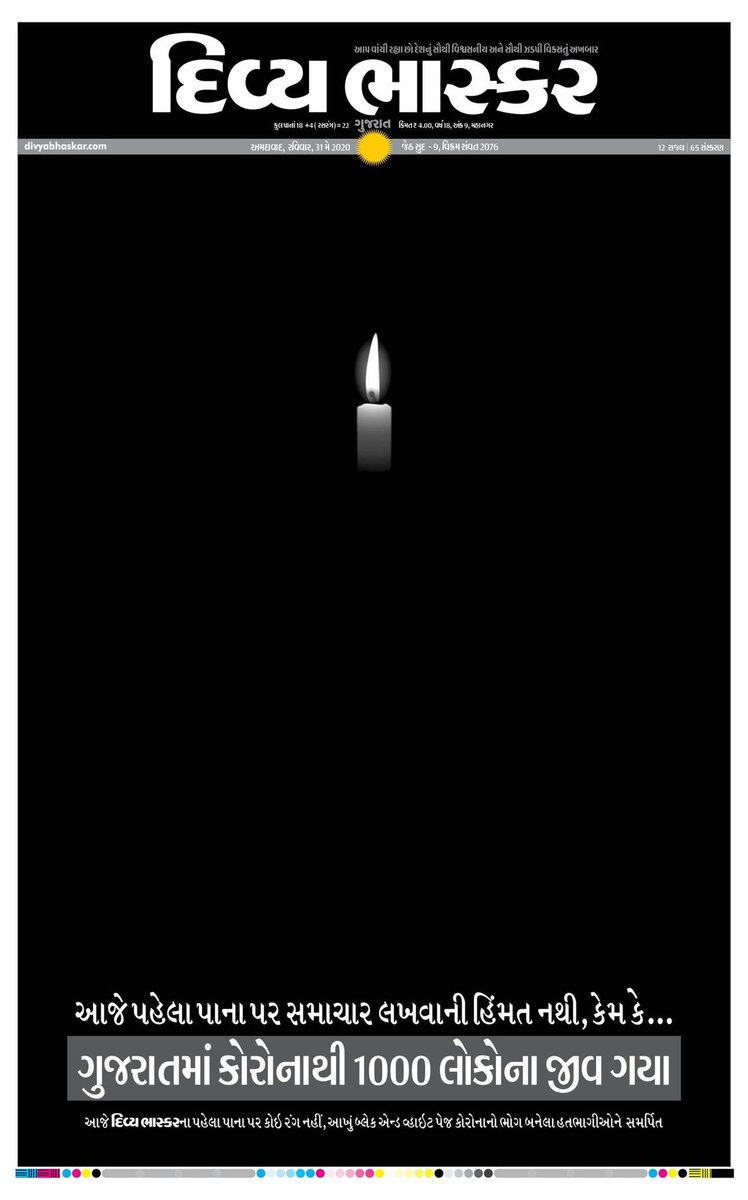
And just who is surprised by Gujarat’s high toll whose, “single-source” was presumably the Trump-Modi rally.
But then, as we saw with Jubilant Organics in Mysore, the media and its masters are somewhat reluctant these days to dig deep when it doesn’t check certain boxes.

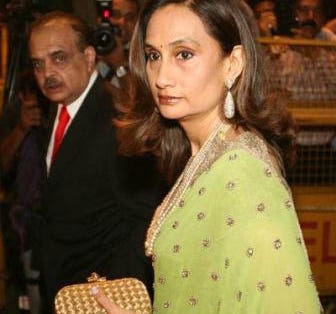
Like what you see? Show us some love. Don’t? Tell us why. Have a tip? Mail us.
Spread the word about The Net Paper, the world’s first social media newspaper.





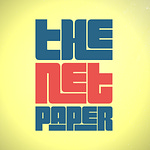

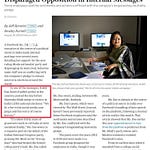
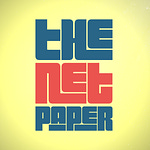

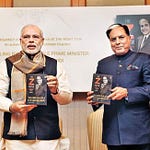

Share this post